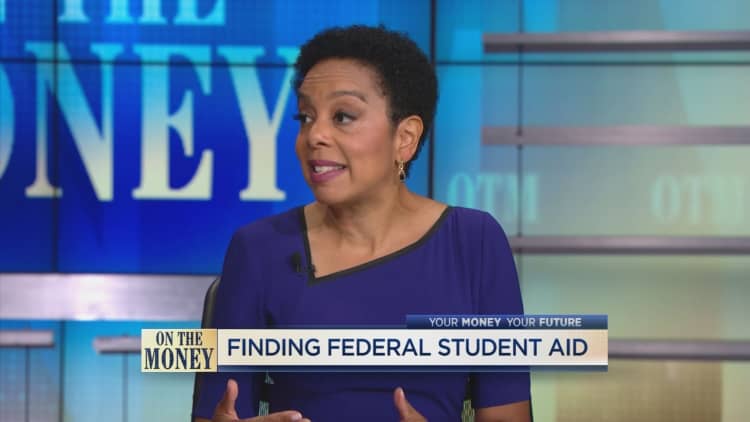
College is only getting more expensive.
Tuition and fees have more than doubled in 20 years, reaching $10,940 at four-year, in-state public colleges, on average, in the 2022-23 academic year. At four-year private colleges, it now costs $39,400 annually, according to the College Board, which tracks trends in college pricing and student aid.
When adding in other expenses, the total tab can be more than $70,000 a year for undergraduates at some private colleges or even out-of-state students attending four-year public schools.
More from Personal Finance:
This strategy could shave thousands off the cost of college
How to understand your financial aid offer
The cheapest states for in-state college tuition
With the fall semester just weeks away, 70% of parents are worried about having enough money to cover the cost, according to a recent report by Discover Student Loans, up from 66% last year and 63% in 2021.
Among students, as many as 92% are concerned they won't have sufficient funds, according to a separate survey of over 9,000 high schoolers and college students by ScholarshipOwl.
Yet, few students and their parents pay the advertised price.
How families pay for college
As of last year, the amount families actually spent on education costs was $28,026, on average, according to Sallie Mae's annual How America Pays for College report — up over 10% from a year earlier.
While parent income and savings cover nearly half of college costs, free money from scholarships and grants accounts for a more than a quarter of the costs and student loans make up most of the rest, the education lender found.
Scholarships are a key source of funding, yet only about 60% of families use them, Sallie Mae found. Those that did, received $8,149, on average.
The vast majority of families who didn't use scholarships said it was because they didn't even apply.
This year's incoming freshman class will rely on loans even more in pursuit of a degree at a public college or university, another report shows.
A 2023 high school graduate could take on as much as $37,300, on average, in student debt to earn a bachelor's degree, according to a NerdWallet analysis of data from the National Center for Education Statistics.
The share of parents taking out federal parent PLUS loans to help cover the costs of their children's college education has also grown, NerdWallet, Discover Student Loans and Sallie Mae all found.
'Having a plan does pay off'
Rick Castellano, a spokesperson for Sallie Mae, advises families to start their scholarship search early so they can maximize free money and minimize loans.
"Having a plan does pay off," he said.

But to get any college aid, students must file a Free Application for Federal Student Aid.
The FAFSA serves as the gateway to all federal aid money, including loans, work study and grants, which are the most desirable kind of assistance.
This year, 71% of families completed the FAFSA, in line with last year, Sallie Mae found.
FAFSA completion can also boost a student's likelihood of going to college and graduating, studies show.






